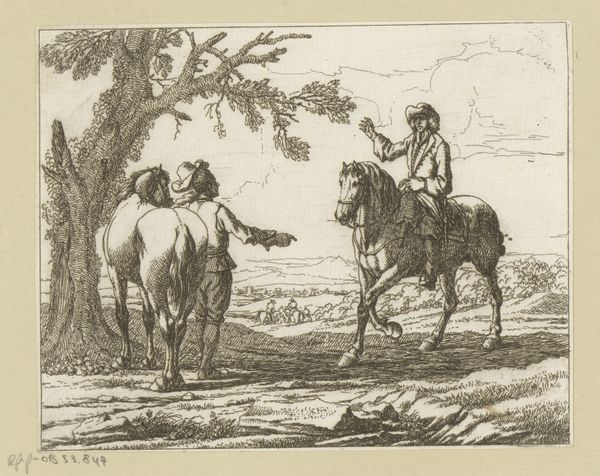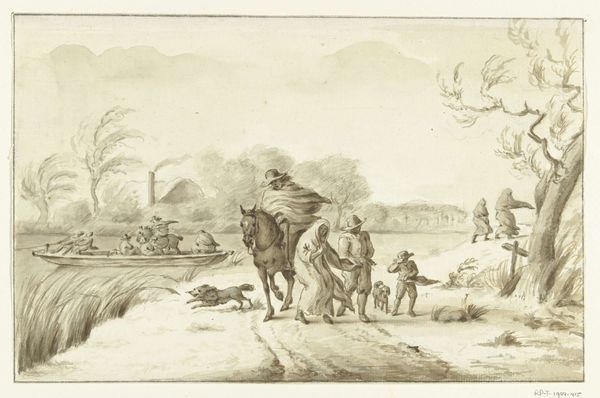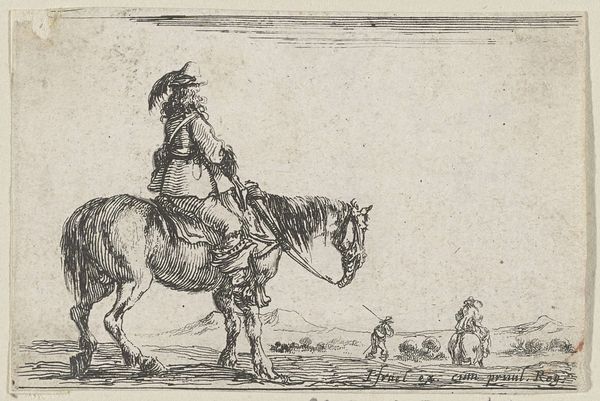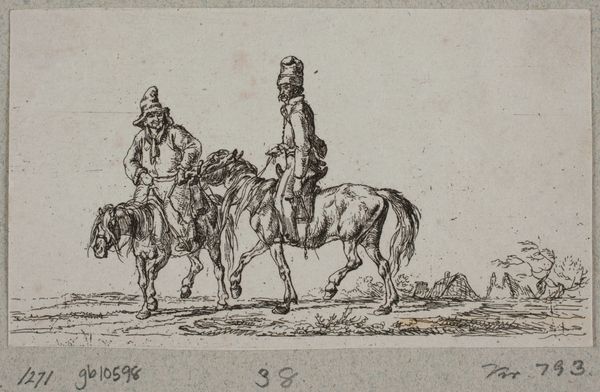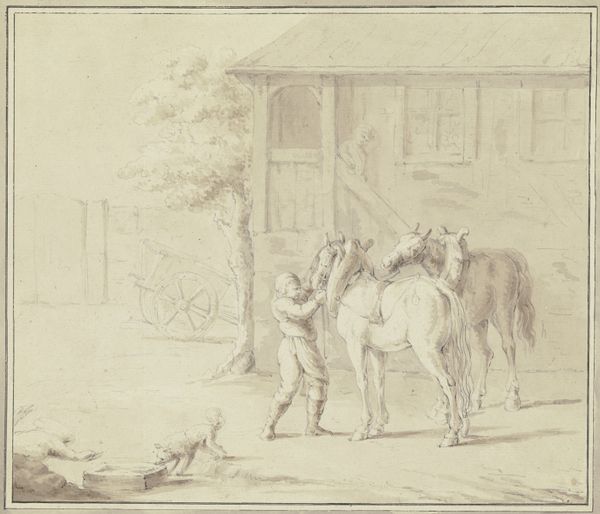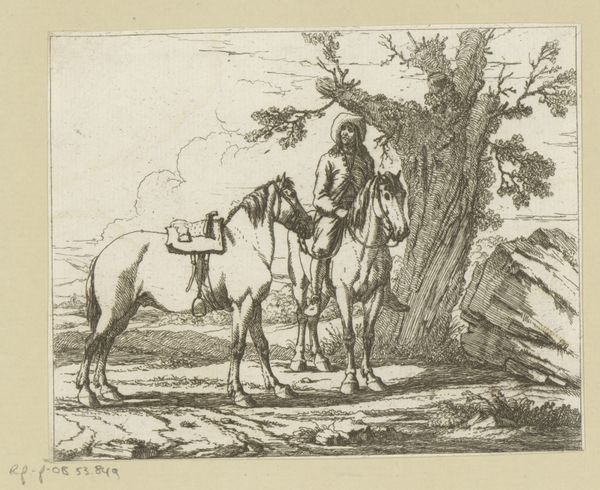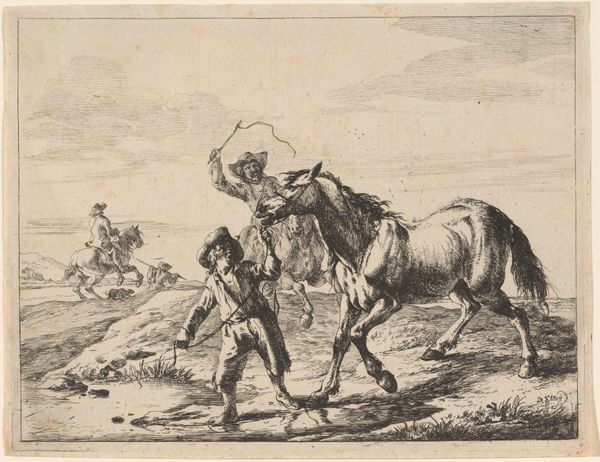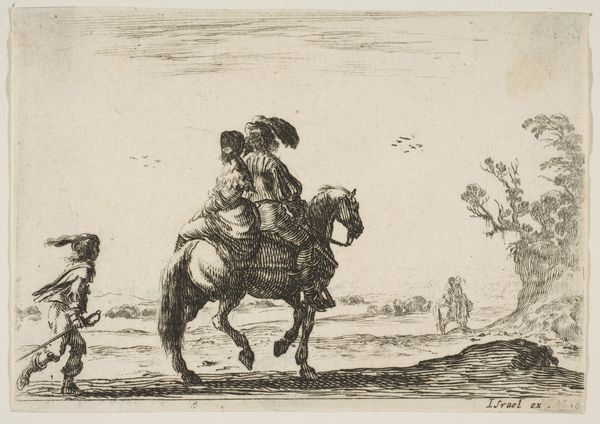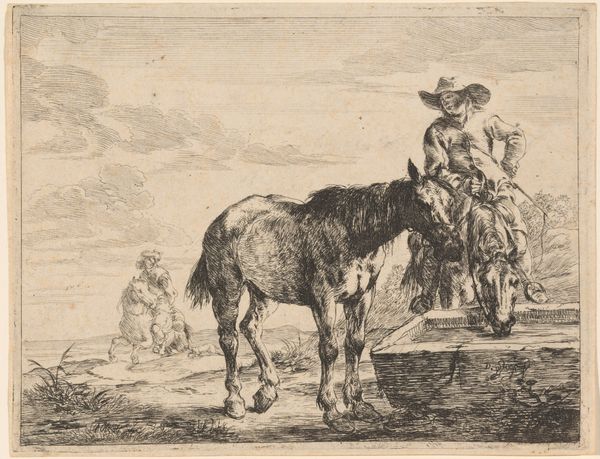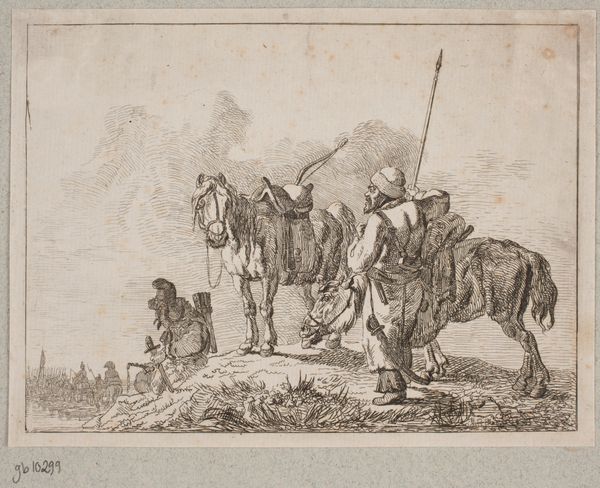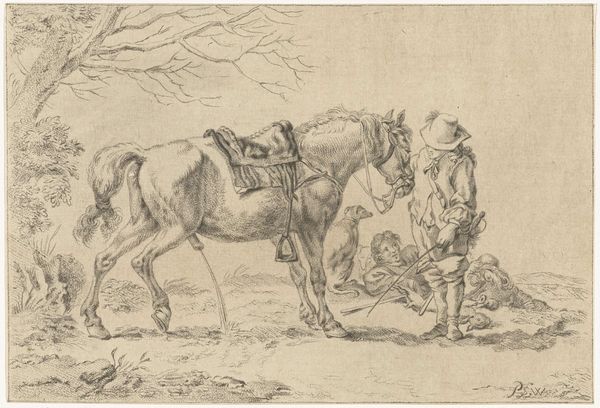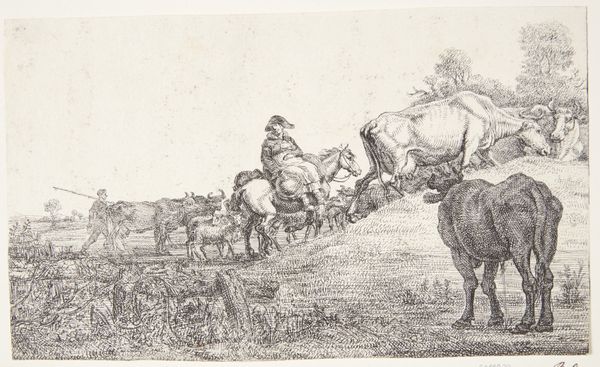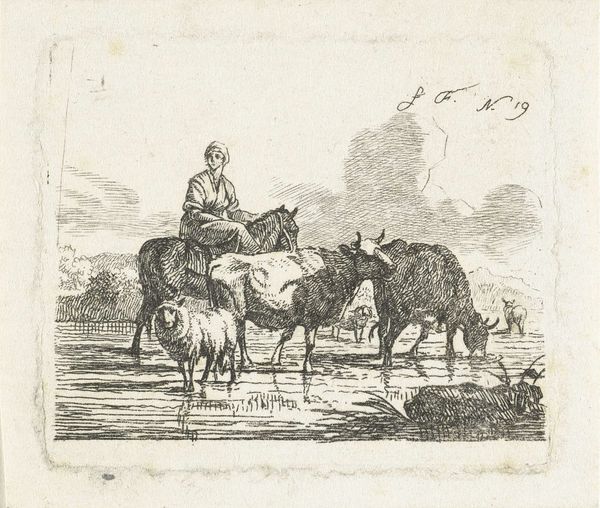
drawing, print, paper, ink, chalk, graphite
#
drawing
#
baroque
# print
#
landscape
#
figuration
#
paper
#
ink
#
chalk
#
graphite
#
genre-painting
Dimensions: 136 × 208 mm
Copyright: Public Domain
Curator: Welcome. Before us hangs “Watering Horses near Windmill,” a drawing attributed to Guillaume Courtois, dating from the 17th century. Editor: It’s evocative! There's something serene yet industrious about the scene; a very rustic pastoral mood permeates it. The stark monochrome palette underscores the quietude. Curator: The artist employs graphite, chalk and ink on paper. Consider how Courtois builds depth. Observe the delicate hatching technique that defines the forms of the horses and windmill, achieving tonal gradations and spatial recession. The foreground’s clear, sharp outlines soften as they recede towards the more blurred horizon, providing spatial depth. Editor: The visible textures, the varied application of the ink, lends the composition a vitality often absent in more polished works. The relative haste of the lines indicates to me that Courtois cared less for formal finish than for immediacy. He’s capturing a moment, documenting a work scene, showing men tending the animals as necessary, everyday labor. Curator: Certainly, and one could also discuss the deliberate placement of the figures relative to the windmill. It represents more than a simple backdrop, serving as a cultural signifier that speaks to industry and human intervention within the natural landscape. The overall balance suggests a classical aesthetic harmony despite the seemingly informal nature of the scene. Editor: Balance, perhaps. But also an honest reflection of rural life! These are not noble steeds, just working animals. I find it intriguing to contemplate the availability and cost of materials back then: paper, ink, graphite, how their access may have impacted who had the power to represent their world. Curator: I hadn’t considered it from that vantage, but it certainly provides a fuller image to do so. Looking again, I recognize how successfully the piece exists as both a representational genre painting and an exercise in line and form. Editor: Indeed, recognizing that tension, or balance, enhances our appreciation. The material realities give us context to understand this as more than just a pretty picture.
Comments
No comments
Be the first to comment and join the conversation on the ultimate creative platform.
